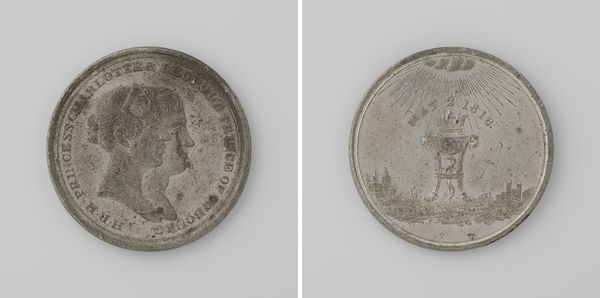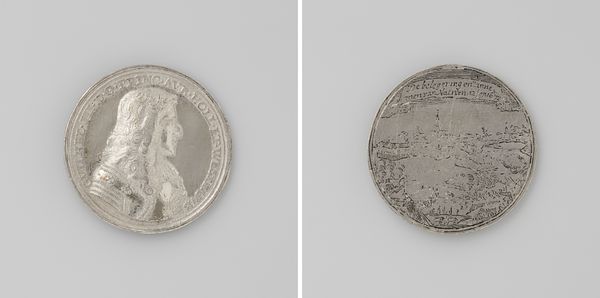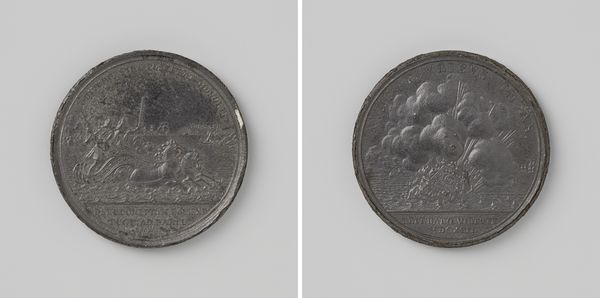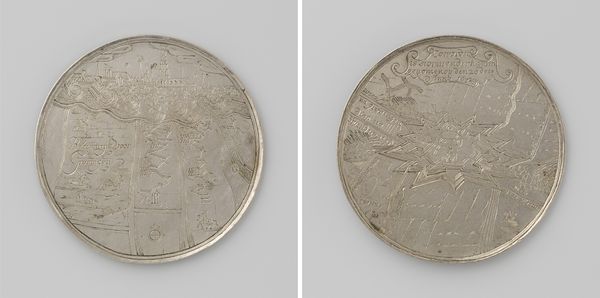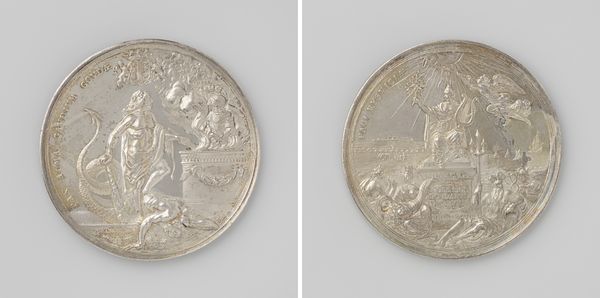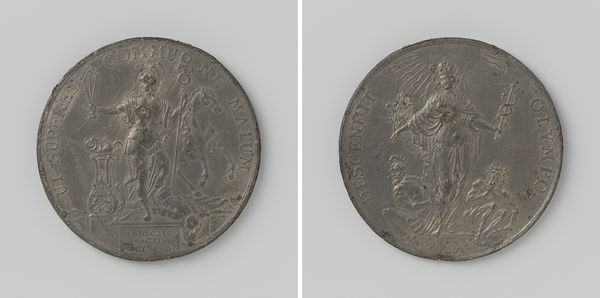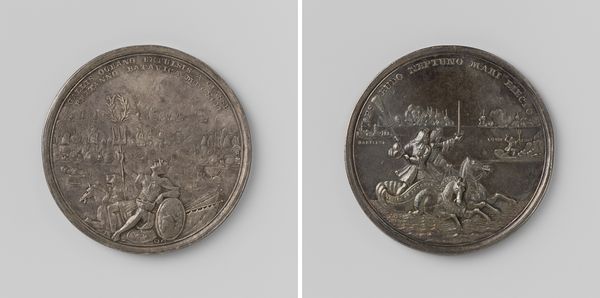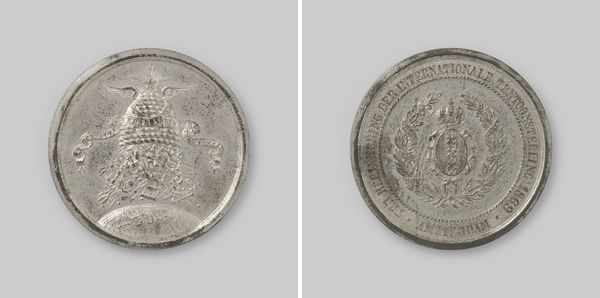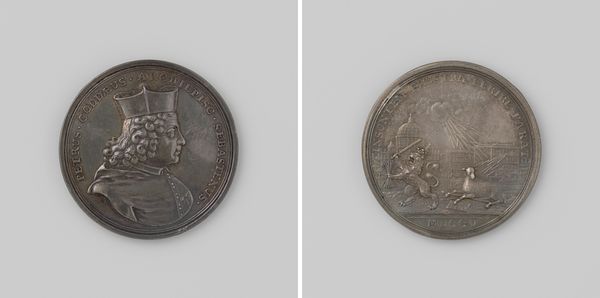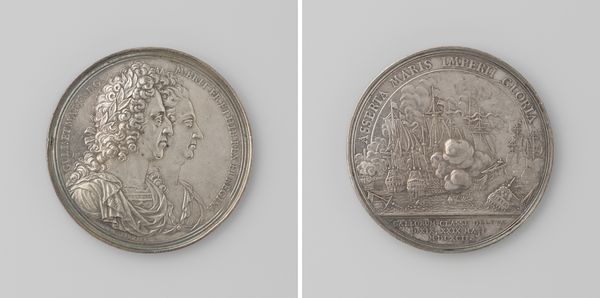
Zeeslag bij Kaap La Hogue, de Fransen verslagen door de vloot van Engeland en Holland 1692
0:00
0:00
metal, relief, sculpture
#
baroque
#
metal
#
sculpture
#
relief
#
sculpture
#
history-painting
Dimensions: diameter 5.3 cm, weight 538 gr
Copyright: Rijks Museum: Open Domain
Curator: Here we have a metal relief sculpture, crafted in 1692 by Jan (I) Smeltzing. It's called "Zeeslag bij Kaap La Hogue, de Fransen verslagen door de vloot van Engeland en Holland", which translates to "Battle of La Hogue, the French defeated by the fleet of England and Holland." Editor: Well, my first thought? It’s like a memory pressed into metal. There's something somber and solid about the gray sheen; the ships and the action feel quite muted by the monochromatic relief. Curator: Exactly! This is a baroque piece—and so that muted feeling really contrasts against the historical significance, but even more so considering what must have gone into the construction and material manipulation. It’s all in service of commemorating the event itself. It functions like an engraved memorial stone. Editor: Precisely. Metal casts are particularly interesting due to the amount of industrial skill that is needed in Baroque sculptures. Here, metal acts as the ultimate document—lasting forever, or as long as the material remains relatively unscathed. The labor behind these small details and textures is quite noticeable. Curator: You know, that's the paradox here—an artistic impulse that strives to create an ethereal quality meets material reality. Consider that relief. I picture Smeltzing feeling both like a historian and a storyteller. Did he relish the creative storytelling aspect, or did he see himself primarily as an engineer making state propaganda? I wonder. Editor: Right. These relief engravings give the state immense propagandistic reach; the way historical memory of conflicts like this are processed is impacted when memorialized and reproduced through metal casts. This makes them more than "high art," more a material processing and commodification project that serves specific social purposes. Curator: A dark lens through which we might examine history, then: as metal cast instead of simply etched in time! Editor: Absolutely. Understanding the raw production helps us unravel how power is distributed and portrayed. By analyzing the physical attributes, we are really deconstructing both its immediate impact and its place within social systems that rely on its materiality.
Comments
No comments
Be the first to comment and join the conversation on the ultimate creative platform.


